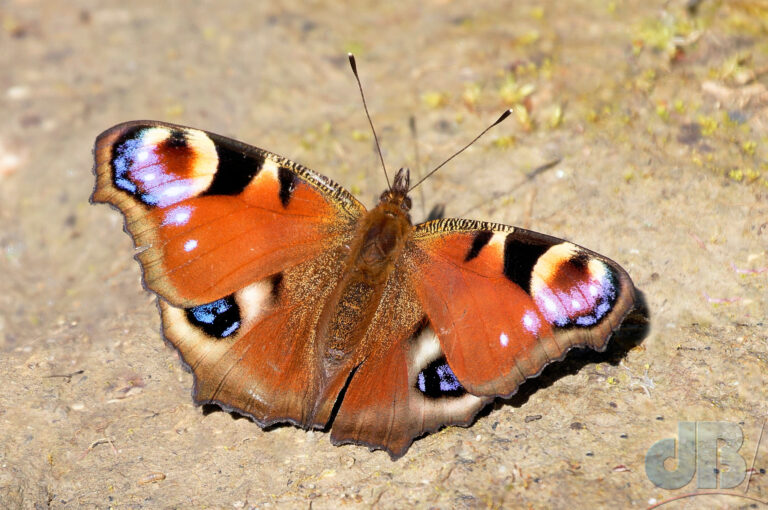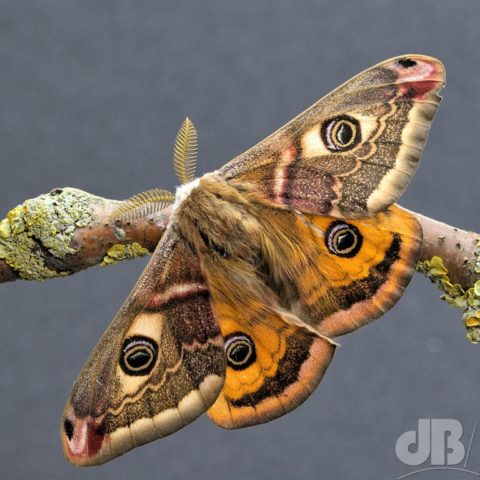TL:DR – Lepidoptera with fake eyes, ocelli, an example of convergent evolution?
The European Peacock (Aglais io) has four “eyes”, known as ocellus, singular ocellus) on its wings just like the Emperor (Saturnia pavonia), it’s a nice example of pareidolia and of convergent evolution.

Butterflies, of course, are just one branch on the moth family tree, we make a distinction in English because of our language and not much else. All the characteristics that are meant to set moths and butterflies apart are found in each, lots of day-flying moths, several with clubbed antennae, loads that are brightly coloured and patterned, some with thin bodies, some with thick, many that close their wings together above their bodies.

There is one difference…butterflies cannot unhook their forewings from their hindwings, moths have a hook called a frenulum that allows them to disconnect forewings from hindwings. That is the only physical difference between moths and butterflies. There is one exception to the rule the Regent Skipper butterfly, Euschemon rafflesia, of Australia, which has this frenulum hook.
Actually, there is another difference but this is not about the adults…the larvae of moths can sometimes spin a silk cocoon to protect them when they become a pupa. Butterflies don’t make silk for their pupa (chrysalis).
Funnily enough, butterflies are a grouping of micro moths. The term micro as opposed to macro, doesn’t relate to their size as some micros are far bigger than macros. The distinction is about evolutionary position on the lepidopteral family tree. It’s worth noting that new genetics research can change established taxonomical positions on a whim when close relatives are sometimes found or lost.